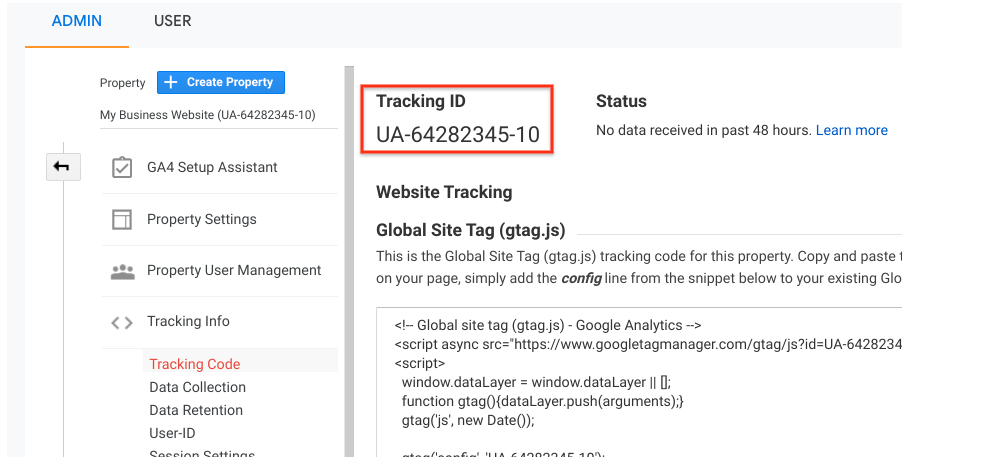Browsing the Intricacies of Data Collection Limitations in Google Analytics: What You Need to Know
Underneath its seemingly uncomplicated user interface lie intricacies that can affect the precision and reliability of the information it offers. Comprehending the intricacies of information collection limitations in Google Analytics is extremely important for making notified choices based on the insights derived from the system.
Data Disparities in Google Analytics
Periodically, information inconsistencies might occur in Google Analytics, necessitating a complete understanding of the platform's complexities to effectively address and fix these discrepancies. These inconsistencies can originate from different resources, such as implementation issues, data sampling, filters, and even bot web traffic. One common factor for data incongruities is inconsistencies in between data accumulated via JavaScript tracking code and data imported from various other sources like Google Ads or Look Console.
To deal with these inconsistencies, it is crucial to very first carry out a thorough audit of your monitoring setup. Confirm that the monitoring code is properly executed on all web pages, look for any kind of filters that could be altering the information, and make sure that there are no redirects or various other technical issues conflicting with information collection. In addition, acquaint on your own with common mistakes, such as cross-domain monitoring mistakes or misconfigured objectives.
Tracking Difficulties and Solutions
Offered the intricacies of information discrepancies that can occur in Google Analytics, dealing with monitoring obstacles and implementing effective services ends up being vital for making certain trustworthy and precise data analysis. One typical tracking difficulty is precisely tracking cross-device and cross-platform user interactions. Users today engage with sites and apps across various devices and systems, making it challenging to attribute actions to a single user accurately. To conquer this, carrying out individual ID monitoring can aid attach communications across different devices under one customer identifier, offering a more holistic sight of individual habits.
Another monitoring challenge comes from ad blockers and personal privacy laws, which can impede the collection of exact data (What Data Does Google Analytics Prohibit Collecting?). Solutions to this consist of executing server-side monitoring, which bypasses client-side limitations, and valuing customer personal privacy choices by supplying clear opt-in mechanisms for information collection

Comprehending Sampling in Reports
Tasting in reports gives a method for examining big datasets successfully while keeping statistical relevance. In Google Analytics, sampling happens when the volume of data inquired surpasses a specific limit, causing the system analyzing only a part of the information to offer understandings. While sampling can quicken record generation and decrease processing demands, it is essential to comprehend its implications on the accuracy and integrity of the outcomes.
When taking care of experienced information, it's important to take into consideration the potential margin of mistake that might emerge as a result of analyzing only a part of the complete dataset. The precision of the insights stemmed from experienced records might differ, and customers must interpret the findings with care, especially when making data-driven decisions based on these reports.
To navigate sampling in Google visite site Analytics efficiently, users can check out choices such as adjusting the sampling level, utilizing personalized record configurations, or leveraging Google Analytics 360 for greater information limitations and even more exact coverage capabilities. By understanding the subtleties of tasting in reports, users can make informed choices and attract trustworthy verdicts from their information analysis efforts.
Effect of Cookie Removal on Information

Additionally, cookie deletion can skew demographic and interest information, as Google Analytics depends on cookies to categorize users hop over to these guys based upon their searching patterns. Without this details, marketing professionals may have a hard time to produce targeted projects that reverberate with their target market. To reduce the impact of cookie removal, services can motivate customers to opt-in for information tracking, make use of various other tracking techniques like individual IDs, and routinely check information discrepancies to ensure data integrity in Google Analytics.
Enhancing Information Accuracy With Filters
To enhance the accuracy and reliability of data in Google Analytics, executing filters is an essential technique for enhancing information accuracy. Filters make it possible for customers to look through and improve the data gathered, making certain that just appropriate and exact details is included in the evaluation.
Filters not only assist in omitting undesirable data but also allow for the personalization of views to concentrate on certain sectors or patterns of user communications. In verdict, using filters in Google Analytics is important for boosting information accuracy and ensuring that informed choices are made based on reputable info.
Verdict
In final thought, browsing the intricacies of data collection constraints in Google Analytics requires a deep understanding of data discrepancies, tracking obstacles, tasting in records, the effect of cookie deletion, and the usage of filters to enhance information precision. By attending to these difficulties and utilizing ideal remedies, companies can ensure the integrity and precision of their data analysis for informed decision-making.
One typical Extra resources factor for data inconsistencies is disparities between data collected by means of JavaScript tracking code and data imported from other resources like Google Advertisements or Browse Console. What Data Does Google Analytics Prohibit Collecting?.
Provided the intricacies of data discrepancies that can develop in Google Analytics, addressing tracking obstacles and applying effective options comes to be critical for making certain trusted and precise data analysis. In Google Analytics, sampling happens when the quantity of information queried exceeds a specific limit, leading to the system assessing just a portion of the information to give understandings. To alleviate the effect of cookie removal, organizations can urge customers to opt-in for information tracking, use other tracking approaches like individual IDs, and regularly monitor information discrepancies to guarantee information stability in Google Analytics.
